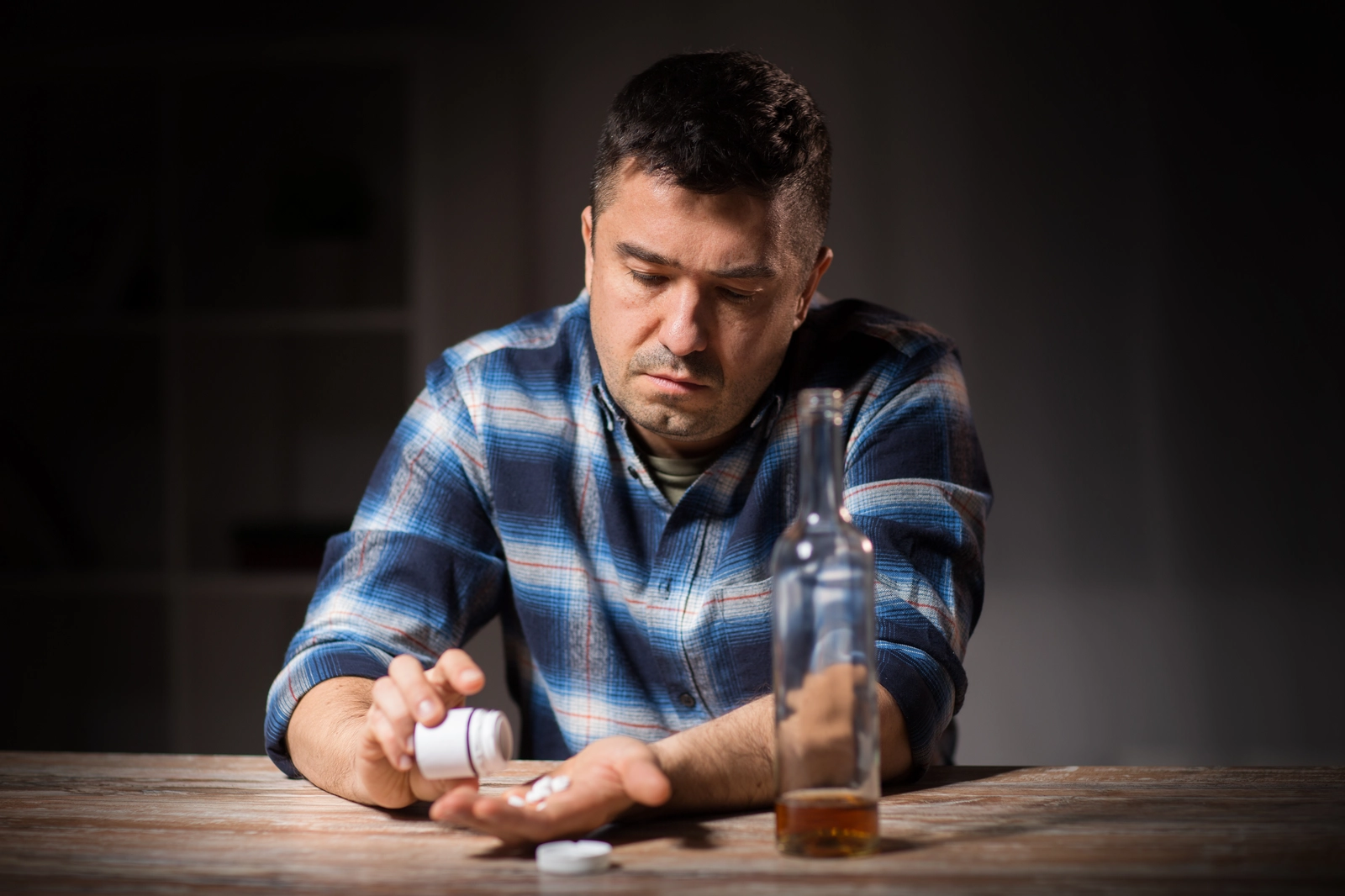Substances | 4 min read
Is Antabuse Generic? What You Need To Know About the Generic Version of Antabuse
Medically Reviewed By

on April 28, 2025
Written By
On April 28, 2025

What you will learn
- Antabuse is a medication that creates severe adverse reactions when combined with any amount of alcohol, serving as a deterrent to drinking.
- Research shows Antabuse is safe and effective when taken under medical supervision, particularly when combined with other recovery support services.
- The medication works best as part of a complete treatment program that includes therapy, support groups, trauma-informed care, and medical monitoring.
- Generic disulfiram offers the same effects as brand-name Antabuse at a lower cost, with identical safety standards and FDA oversight.
- Some people take disulfiram for extended periods, with treatment length determined by individual factors like recovery stability, risk factors, and support system strength.
Recovering from alcohol dependence requires courage, commitment, and often medication support. Antabuse has been a part of alcohol abuse treatment options for decades, helping many people maintain their sobriety through a unique mechanism of action. As medication costs continue rising, understanding generic alternatives becomes increasingly important for those seeking treatment and to start their recovery process.
What is Antabuse?
Antabuse is a medication prescribed to support alcohol cessation treatment.[1] The medication works by creating an intense adverse reaction when someone consumes alcohol, helping to deter drinking behavior through negative reinforcement.
The medication blocks the enzyme that helps break down alcohol in the body, leading to a rapid buildup of acetaldehyde in the system.[2] When someone taking Antabuse drinks alcohol, they experience severe physical symptoms within 10 to 15 minutes, including flushing, headache, nausea, vomiting, chest pain, and difficulty breathing. These unpleasant effects can last for several hours and serve as a powerful deterrent against alcohol consumption.
Antabuse is not a cure for alcohol dependence and works best as part of a comprehensive treatment program that includes counseling, support groups, and lifestyle changes.[3] The medication requires a strong commitment since it must be taken regularly to be effective, and people need to be completely alcohol-free for at least 12 hours before starting the medication. Doctors carefully evaluate each person’s situation before prescribing Antabuse, as it requires careful monitoring and may not be suitable for everyone seeking treatment.
Is Antabuse Effective?
Research has shown Antabuse to be both safe and effective when taken as prescribed under proper medical supervision.[4] Studies comparing Antabuse to other medications that support sobriety have demonstrated positive outcomes, particularly when the medication is taken consistently and monitored by healthcare professionals. The key factor in the success of Antabuse treatment lies in supervision – people who take the medication under regular medical oversight show significantly better outcomes than those who take it without supervision.
The effectiveness of Antabuse depends heavily on commitment to treatment and integration with other recovery tools. Success rates increase substantially when the medication is combined with counseling, support groups, and regular check-ins with treatment teams. Physicians typically recommend sustained treatment periods of several months or longer to achieve optimal results. Nurses, addiction counselors, and primary care doctors work together to track progress and adjust treatment plans as needed.
What Treatments Are Used Alongside Antabuse in Alcohol Treatment?
Recovery from alcohol dependence often requires a multi-faceted approach, with Antabuse serving as one component of a comprehensive treatment strategy.[5] Treatment professionals typically recommend combining medication with various therapeutic and support services to address both the physical and psychological aspects of alcohol dependence:
- Psychotherapy: One-on-one sessions with trained therapists help identify triggers, develop coping strategies, and address underlying mental health concerns that may contribute to alcohol use.
- Trauma-informed care: Specialized treatment that recognizes the impact of past trauma on alcohol use, helping people process traumatic experiences and develop healthy coping mechanisms in a safe, supportive environment.
- Support group participation: Regular attendance at AA meetings or other peer support groups provides community connection, accountability, and shared experiences with others in recovery.
- Medical monitoring: Regular check-ins with doctors and treatment teams ensure medication effectiveness, manage side effects, and track overall health improvements during recovery.
- Family therapy: Sessions involving loved ones help repair relationships, establish healthy boundaries, and create a supportive home environment for sustained recovery.
- Stress management programs: Learning techniques like meditation, deep breathing, or yoga helps develop healthy ways to manage stress without alcohol.
- Dual diagnosis treatment: For those with co-occurring mental health conditions, specialized care addresses both alcohol dependence and mental health needs simultaneously.
Is There a Generic Version of Antabuse?
Yes, disulfiram is the generic version of Antabuse.[6] The generic medication contains the same active ingredient and works in the same way as the brand-name version. Since the FDA approved generic disulfiram, it has become a more cost-effective option for many people seeking alcohol dependence treatment.
The generic version is typically available at a lower price point than brand-name Antabuse, making it more accessible for those who need long-term treatment. Most insurance plans prefer to cover the generic version, and many pharmacies stock disulfiram as their standard option.
Like brand-name Antabuse, generic disulfiram requires a prescription and careful medical supervision. The effectiveness, safety profile, and potential side effects remain identical between the generic and brand-name versions, as the FDA requires generic medications to meet the same strict quality standards as their brand-name counterparts.
Are There Differences Between Antabuse and Disulfiram?
No significant differences exist between Antabuse and disulfiram (its generic name), as they contain the same active ingredient and produce identical effects in the body. Both medications work through the same mechanism to create an adverse reaction when alcohol is consumed.
The main differences lie in branding and cost. Brand-name Antabuse often costs more than generic disulfiram, though the price difference varies depending on location, insurance coverage, and pharmacy pricing. Some pharmacies may offer discount programs specifically for the generic version – be sure to check with your provider for medical advice.
Manufacturing processes between pharmaceutical companies might vary slightly, but the FDA requires all generic medications to demonstrate the same quality, strength, purity, and stability as their brand-name counterparts. Both medications must meet identical safety standards and contain the same amount of active ingredient.
Some people may notice subtle differences in the appearance, shape, or size of generic disulfiram compared to Antabuse tablets. These cosmetic variations do not affect how the medication works in treating alcohol dependence. Treatment providers can prescribe either version interchangeably based on factors like cost and availability.
Do People Take Disulfiram Long-Term?
The duration of disulfiram treatment varies based on individual needs and recovery progress, though some people do take it as a long-term medication.[7] Healthcare providers often recommend continuing disulfiram for months or even years while working through comprehensive recovery programs.
Several factors influence the length of treatment, including:
- Recovery stability: Length of sobriety and confidence in maintaining abstinence
- Personal risk factors: Including social environment, stress levels, and presence of triggers
- Support system strength: Access to counseling, support groups, and family assistance
- Overall treatment progress: Response to therapy and development of coping skills
- Medical supervision: Regular monitoring and assessment of ongoing treatment benefits
The decision to continue or discontinue disulfiram should always be made in consultation with healthcare providers. Stopping the medication abruptly or without medical guidance can increase the risk of relapse. Many treatment teams recommend gradually reducing the medication only after establishing strong recovery foundations and developing robust coping strategies.
Frequently Asked Questions About Antabuse and Disulfiram
You must avoid all alcohol for at least 12 hours before taking your first dose. This includes alcohol in food, beverages, cough medicines, mouthwash, and other products. Your doctor will work with you to ensure you’re ready to start treatment and understand how to avoid accidental exposure to small amounts of alcohol to avoid any unnecessary unpleasant symptoms.
Within 10 to 15 minutes of consuming alcohol, you’ll experience intense physical reactions and unpleasant side effects, including severe headache, nausea, vomiting, flushing, sweating, thirst, chest pain, difficulty breathing, heart palpitations, tiredness, anxiety, shortness of breath, and weakness. These symptoms can last for several hours and may become severe enough to require emergency care, which is why following medical guidance is essential to avoid any serious side effects (including vision loss, changes to liver function, hypotension, and severe changes in blood pressure).
No, stopping Antabuse without medical supervision can significantly increase your risk of relapse. Your healthcare provider will help create a tapering plan based on your progress, stability in recovery, and individual circumstances. They’ll ensure you have proper support systems and coping strategies in place before reducing or stopping the medication.
Antabuse should be part of a comprehensive recovery program that includes individual counseling, trauma-informed care, support group participation, family therapy, stress management techniques, and regular medical monitoring. Many people also benefit from nutritional counseling, lifestyle changes, and treatment for any co-occurring mental health conditions.
Ascendant New York Editorial Guidelines
Here at Ascendant New York, we understand the importance of having access to accurate medical information you can trust, especially when you or a loved one is suffering from addiction. Find out more on our policy.
[1] Disulfiram (Oral Route) Description and Brand Names – Mayo Clinic. (n.d.). Www.mayoclinic.org. https://www.mayoclinic.org/drugs-supplements/disulfiram-oral-route/description/drg-20063488 on December 27, 2024
[2] Cederbaum, A. I. (2012). Alcohol Metabolism. Clinics in Liver Disease, 16(4), 667–685. https://pmc.ncbi.nlm.nih.gov/articles/PMC3484320/ on December 27, 2024
[3] Winslow, B. T., Onysko, M., & Hebert, M. (2016). Medications for Alcohol Use Disorder. American Family Physician, 93(6), 457–465. https://www.aafp.org/pubs/afp/issues/2016/0315/p457.html on December 27, 2024
[4] Skinner, M. D., Lahmek, P., Pham, H., & Aubin, H.-J. (2014). Disulfiram Efficacy in the Treatment of Alcohol Dependence: A Meta-Analysis. PLoS ONE, 9(2). https://pmc.ncbi.nlm.nih.gov/articles/PMC3919718/ on December 27, 2024
[5] Cunningham, J. A., & McCambridge, J. (2011). Is alcohol dependence best viewed as a chronic relapsing disorder? Addiction, 107(1), 6–12. https://pmc.ncbi.nlm.nih.gov/articles/PMC3272223/ on December 27, 2024
[6] Drugs.com. (2019). Antabuse. Drugs.com; Drugs.com. https://www.drugs.com/antabuse.html on December 27, 2024
[7] Mutschler, J., Dirican, G., Gutzeit, A., & Grosshans, M. (2011). Safety and Efficacy of Long-Term Disulfiram Aftercare. Clinical Neuropharmacology, 34(5), 195–198. https://pubmed.ncbi.nlm.nih.gov/21881495/ on December 27, 2024




